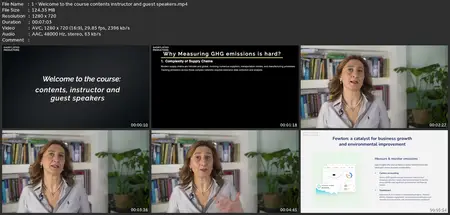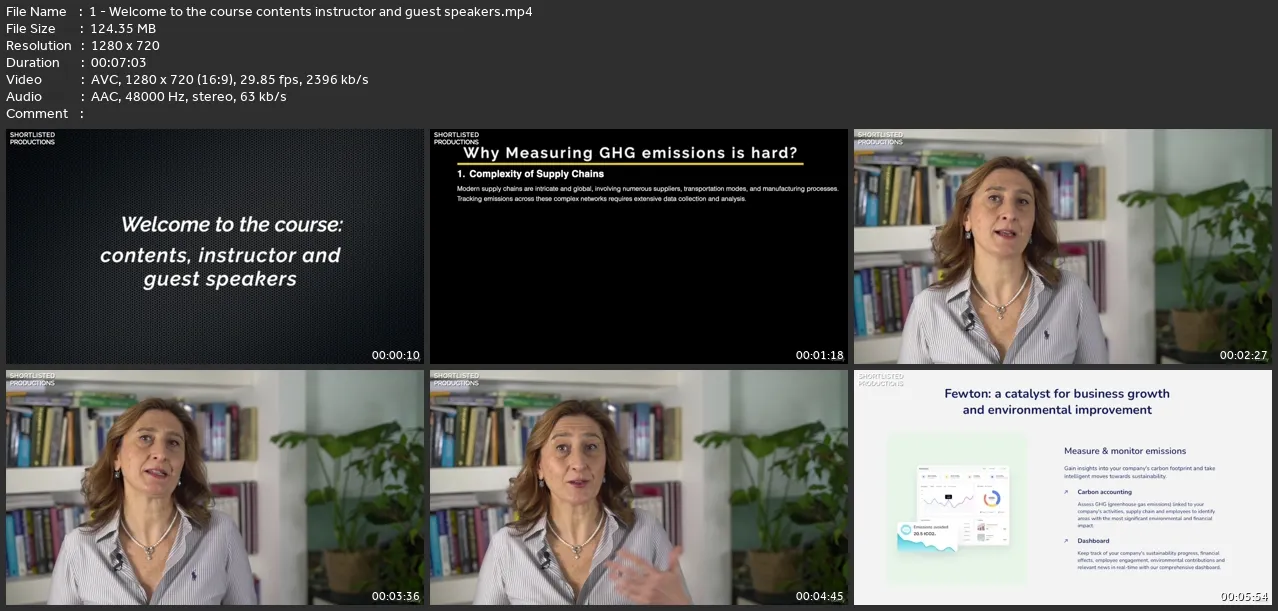Carbon Accounting And E-Liability As Tools For Reducing Ghgs
Last updated 7/2024
MP4 | Video: h264, 1280x720 | Audio: AAC, 44.1 KHz
Language: English (UK) | Size: 3.78 GB | Duration: 4h 0m
Last updated 7/2024
MP4 | Video: h264, 1280x720 | Audio: AAC, 44.1 KHz
Language: English (UK) | Size: 3.78 GB | Duration: 4h 0m
Carbon Footprint, GHG Accounting, Reporting/Regulations, Greenhouse Gas Protocol, Emission Scopes/Factors, Supply Chain
What you'll learn
Carbon accounting and reporting
Voluntary and mandatory sustainability disclosures that require carbon reporting
Greenhouse gas protocol and ISO 14064 as key GHG accounting and reporting standards
Defining organisational and operational boundaries for GHG emissions reporting
Emission scopes and calculation methods
Data collection and emission factors
GHG accounting and reporting alignment and collaboration initiatives
E-Liability Accounting approach for driving carbon reductions across value chain and product differentiation
GHG Accounting and Reporting Technology tools considerations
Requirements
There are no special requirements for this course, anyone can learn about GHG Accounting
Description
Greenhouse gas emissions or, as it is also called, carbon footprint is a fundamental component of the overall sustainability performance of any organisation. Measuring Greenhouse Gas emissions (GHGs) involves quantifying the amount of GHGs released into atmosphere as a result of operations directly or indirectly owned or controlled by a company. As carbon accounting is becoming mandatory across many regions, we created a course that will help you navigate this subject.The course provides a brief overview of the key voluntary and mandatory disclosure regulations that require reporting of the greenhouse gases. It defines carbon accounting concepts, explains which data and calculation methods are required in order to calculate the GHG emissions. In this course you will explore examples of GHG inventories and sustainability reports so that you feel comfortable understanding and analysing GHG emissions data in these reports. We will discuss key carbon accounting standards, mostly focusing on the Greenhouse Gas Protocol methodology. At the same time we will look at the criticisms of this standard and the solutions that are proposed by the academics from Harvard and Oxford, specifically focussing on E-Liability accounting method and how it drives GHG reductions across value chains and helps with competitiveness and product differentiation based on carbon intensity. The course is structured in a way that is gives you an insight into the process disregarding the size of the business or the industry, but if you want to dig deeper, we will provide you with additional reading materials by sector. We will briefly touch the question of how technologies and software can help you with the carbon accounting process automation and what you need to pay attention to when choosing the software. And we will also talk about existing collaboration initiatives that you might want to join to get support/benchmarking for your carbon reporting and GHG reduction activities.
Who this course is for:
Leaders and professionals who are involved in definition and execution of sustainability strategy and reduction of carbon footprint of their organisations,Sustainability and finance professionals involved in GHG Reporting and Climate Risk and Opportunities Assessment,Procurement professionals involved in improving resilience of their company's supply chain and working with suppliers to reduce their emissions,Financial and investment analysts seeking to better understand carbon disclosures,Operational managers tasked with the execution of carbon reduction strategies,Consultants working in the area of climate and sustainability,Professionals looking to switch career to jobs the sustainability/climate focus,Climate- Sustainability- and ESG-curious





